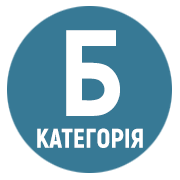KEY PRINCIPLES OF DEVELOPING METHODOLOGY ‘KIDS’ DEVELOPMENT DIAGNOSIS AND DETERMINING THE RISK OF AUTISM “KIDD” FOR CHILDREN FROM 1.5 TO 6 YEARS
DOI:
https://doi.org/10.32782/psy-visnyk/2023.4.14Keywords:
autism spectrum disorder, psychodiagnostics, developmental assessment, childhood autism, risk of ASD, testing children with ASD, developmental delay in children, socialization, children with special needs, inclusion, developmental disorders, “KiDD” methodology.Abstract
In the article the author describes the fundamental principles of creating methodology «Kids’ Development Diagnosis and Determining the Risk of Autism for children aged 1.5-6 years “KiDD” in electronic form with automatic result calculation and creation of «The Individual Development Plan for the Child». The key distinction of this methodology from others lies in the use of a sophisticated software algorithm, which presents subsequent questions based on the answers to previous ones, to track the developmental level of each of the 100 skills of the child, regardless of their age. If a particular skill is absent, the program suggests checking that skill of the version of previous age norms. If a skill corresponding to the child’s age, the program suggests checking a more advanced version of that skill, characteristic of the next age norms. Children with ASD often develop unevenly, which is why testing using the “KiDD” methodology not only identifies a child’s deficits but also highlights their strengths. This approach is suitable for children with uneven development. In addition, the level of risk for ASD is determined: low, moderate, medium, high. The methodology will be accessible and free for parents testing their child independently (without access to assistance or financial means) and for professionals who conducting the child offline or online. The “KiDD” methodology has been implemented and tested at the children’s center “MriyLandiya” and during remote psychological work with parents of children with developmental delays and/or ASD. Intellectual property rights for the methodology were registered with the Ukrainian National Office of Intellectual Property and Innovations on February 10, 2023, under the number с202300749. The electronic format of the methodology in the form of a mobile application for phones or tablets is undergoing the final stage of testing. The results of this testing will be published in upcoming publications.
References
Solish, A., Perry, A., & Shine, R. The Parent Involvement Questionnaire: Measuring parents’ involvement in behavioural
intervention for their children with an autism spectrum disorder. Journal on Developmental Disabilities, 21(1), 34. 2015.
Solish, A., & Perry, A. Parents’ involvement in their children’s behavioral intervention programs: Parent and therapist
perspectives. Research in Autism Spectrum Disorders, 2(4), 728-738. 2008
Chaidi, I., & Drigas, A. Parents’ involvement in the education of their children with Autism: Related research and its results.
International Journal Of Emerging Technologies In Learning (Ijet), 15(14), 194–203. 2020.
Ostrovska К., Качмарик Х., Дробіт Л. Osnovy diahnostyky ditei z rozladamy autystychnoho spektra: navchalnyi posibnyk.
[Fundamentals of Diagnosing Children with Autism Spectrum Disorders: A Teaching Guide.] Vydavnychyi tsentr LNU imeni Ivana
Franka. 2017.
Ratter М., Lord К., Kuto E. ADI-R. Western Psychological Services. Giunti O.S. 2005.
McCrimmon, A., & Rostad, K. Test review: Autism diagnostic observation schedule, (ADOS-2) manual (Part II): Toddler
module. Journal of Psychoeducational assessment, 32(1), 88–92. 2014
Schopler E., Reichler R., Bashford A., Lansing M., Marcus L. Psychoeducational Profile–Revised (PEP-R). Austin. TX:
PROED. 1990.
Kiphard, E., Schilling F. Body-Coordination-Test for Children: KTK. 1974.
Sinnhuber H. Sensomotorische Förderdiagnostik. Ein Praxishandbuch zur Entwicklungsüberprüfung und
Entwicklungsförderung für Kinder von. 2014.
Robins, Diana L., Deborah Fein, and Marianne Barton. Modified checklist for autism in toddlers, revised, with follow-up
(M-CHAT-R/F) TM. LineageN. 2009.
Schopler E., Reichler R., De Vellis R., Daly K. Toward objective classifi cation of childhood autism: Childhood Autism
Rating Scale (CARS). J. Autism Devel. Dis. l980.
Семеніхіна, А. Р. Здатність до навчання, зона найближчого розвитку як поняття розвитку. Редакційна колегія.
169.
Rimland B., Stephen M. Edelson. Autism treatment evaluation checklist. Journal of Intellectual Disability Research. 1999.
Булах І. Є., Мруга М. Р. Створюємо якісний тест : навч. посіб. К. : Майстерклас. 2006. 160.






